What Is Competitor Analysis
Social media competitive analysis allows marketers to identify the strengths and weaknesses of other brands in your niche and compare them to your own. Benchmarking your performance against industry leaders is beneficial in many ways, as doing so not only helps you see the overall market situation, but also discover more opportunities.
Essentially, social media presence analysis reviews various metrics: which social networks are involved, what are your competitors’ content strategies, keywords, hashtags, mentions, engagement rates, etc. With this analysis, you’ll be able to understand how you stack up against competitors on different levels and create a clear growth plan.
Why Run Social Media Competitive Analysis
Competitive media reports will help you derive plenty of insights and provide a clear sense of direction. Specifically, you’ll be able to identify:
- Competition within your niche
- Your direct and indirect rivals
- Demand for your products and services
- Effectiveness of your competitors’ approach
- Gaps in your social media strategy
- The voice of your competitors
- Trendy topics and themes to take advantage of
- The best times to share content on social media
- Pain points of potential customers
- Ways to stand out from your competition
- Audience sentiment
- Potential mistakes to avoid
All in all, monitoring other brands within your niche will provide you with a better understanding of the market and help you form the right objectives. While it’s rather hard and time-consuming to research the niche manually, social media competitive analysis tools can automate the work. Below, we’ll share what to look out for in your analysis and which programs to use for each metric.
How to Analyze Your Competitors on Social Media
Social media competitive analysis can be broken down into three main steps. First, identify your direct and indirect competitors, then carefully analyze their social presence, and finally discover gaps to fill in.
1. Identify Your Competitors
First, you need to identify who your competitors are. Here are a few ways to do so:
- Identify target keywords with Google AdWords Keyword Planner. This tool can analyze your website and create a list of relevant keywords with their search volume and competition. If you already know your target keywords, simply enter them into the program to get related keywords and use them to narrow down the list of potential competitors later on.
- Choose ten of the most relevant keywords to your business and type them into Google one by one. Look through the search results to understand who ranks where in the SERP for those keywords and gets the most traffic. Pay particular attention to brands that pay for ads to appear above organic results.
- Also, check which businesses rank for those keywords in social searches. They might not be the ones that rank well on Google. For example, to study competitors on Facebook, type your keyword into the search box and click “Pages” on the top menu.
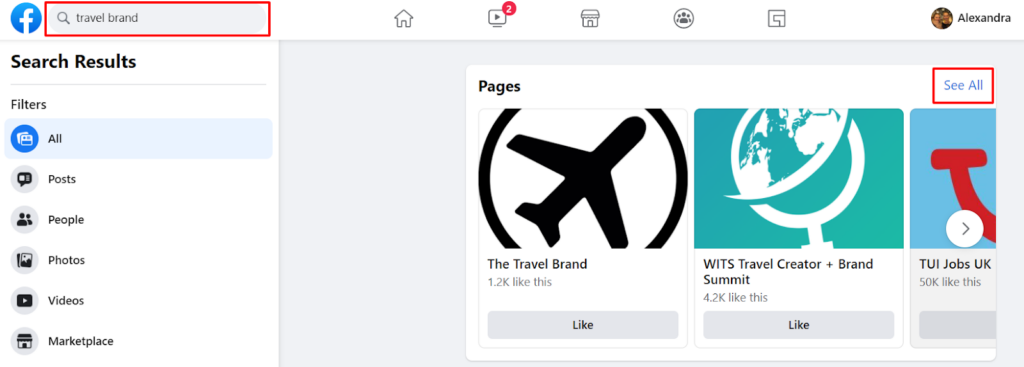
- Discover what other brands your audience follows within your niche. This may reveal even more competitors. For example, you can check top followers in Twitter Analytics, view their profiles and see the accounts that they follow. If you click “Tweets & Replies”, you’ll also see which profiles they interact with.
- Once you have a list of potential competitors, narrow it down to five or ten so that you can make time for a thorough analysis of each. Choose the ones with the closest fit to your brand and audience. There is no need to analyze industry heavy hitters, as their goals are different from yours, particularly if your brand is smaller.
- Apart from your direct competition, it also makes sense to take a look at indirect competitors. This includes brands that target a slightly different audience but provide similar services or vice versa. This analysis may help you extend your target audience or the range of services you offer.
2. Analyze Their Activity on Social Media
Now that you’ve discovered who your competitors are, it’s time to analyze the social media profiles of these brands and find more opportunities for growth. To gather more data, take advantage of the social media competitive analysis tools that we describe in this chapter.
Social Networks
First, check which social networks your competitors are active on. Visit the websites of your competitors and click the social media icons at the bottom of their homepages. Naturally, just because a business uses a particular network, you shouldn’t blindly follow their lead. But knowing their strategy will help you better your own.
Make sure to extend your analysis beyond social media. For example, Synapview allows you to also monitor your rivals on Reddit and blogs. Talkwalker tracks over 150 million sources, including blogs, reviews, videos, forums, news, etc. Knowing which other platforms your competitors are on will allow you to reach a wider audience.
Content
Content is the primary tool for many brands to connect with potential customers, so analyzing the content strategies of your competitors is the next important step. Make sure to check:
- Types of content they post. What’s the balance of texts, photos, and videos?
- The tonality of their posts. Do they use a casual, conversational tone or a rather formal tone?
- Their most liked and shared posts. Which topics is the audience most interested in?
- Do they share original content or reshare articles from other sites?
- What’s the purpose of their content: promotional, educational, entertaining, or something else?
One great way to dig deeper is by subscribing to your competitors’ newsletters, which usually reflect the company’s voice and message and can give you plenty of insights into achievements, clientele, product updates, and future plans. All this information may help you understand ways to strengthen your stance within the niche.
Tools like BuzzSumo help you identify your rivals’ most shared posts and find topics that can drive traffic. Unbox Social is an Instagram competitor analysis tool that provides advanced analytics, such as engagements, interactions, comments, likes, hashtags, and keywords used. Twitonomy derives insights into your competitors’ presence on Twitter, such as the total number of tweets, average tweets per day, number of retweets, etc.
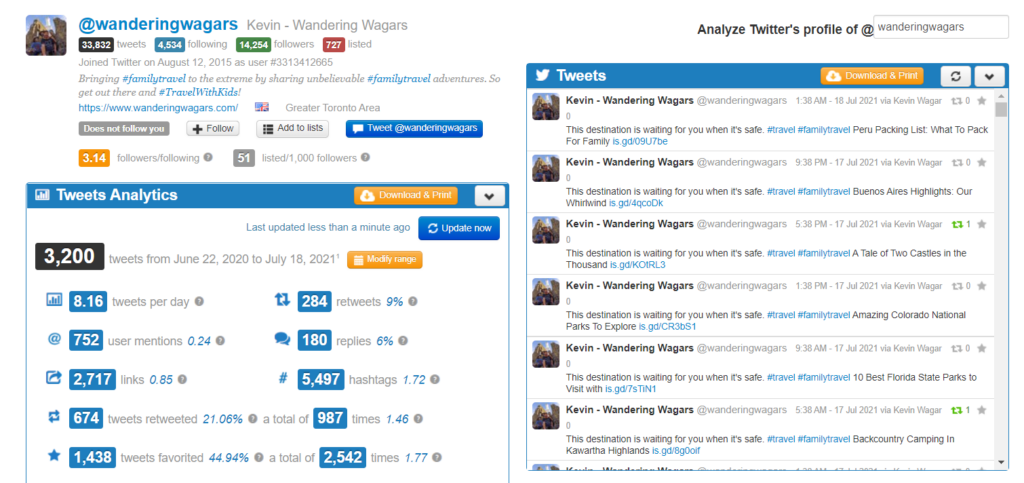
Influencers
A strategy that many brands use to gain the attention of more users is influencer marketing. Try to find out if your competitors use this approach and, if they do, what kind of influencers they partner with and what sort of engagement these campaigns generate. Here, dedicated tools like Socialbakers offer in-depth analytics, including influencer tracking for competing businesses.
Keywords
Try to discover which keywords your competitors rank for. Google AdWords Keywords Planner will help you identify the keywords and show their average monthly searches and competition level. SEMrush will pull your competitors’ keywords that can influence your own content strategy. Keyhole shows the most engaging posts and influential users in the niche for the selected keywords.
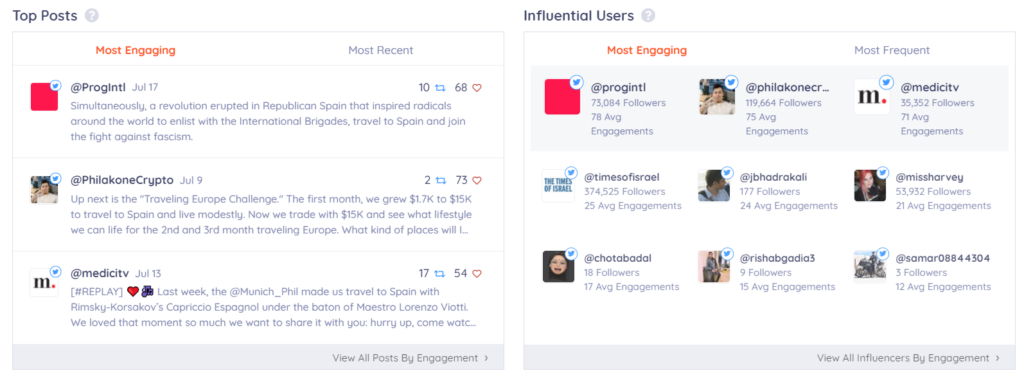
Ahrefs checks the top organic keywords for any URL and gives an estimate of the traffic it receives through these keywords. Another Ahrefs feature called “Content Gap” will allow you to find keywords that your competitors rank for, but you don’t.
Following Size
Most social media analysis templates check the following size of your competitors. Understanding where their audiences are coming from will allow you to see who you could potentially be reaching. Also, take a look at demographics when analyzing your competitors’ following. If you have a buyer persona, compare the findings to your audience and see whether you are targeting the correct users.
Iconosquare shows data on follower count, growth, engagement rate, and post frequency for the last 30 days. SproutSocial is another great tool that allows you to examine your followers’ demographics. SocialBlade allows you to evaluate follower count on different social platforms and derive insights on audience demographics.
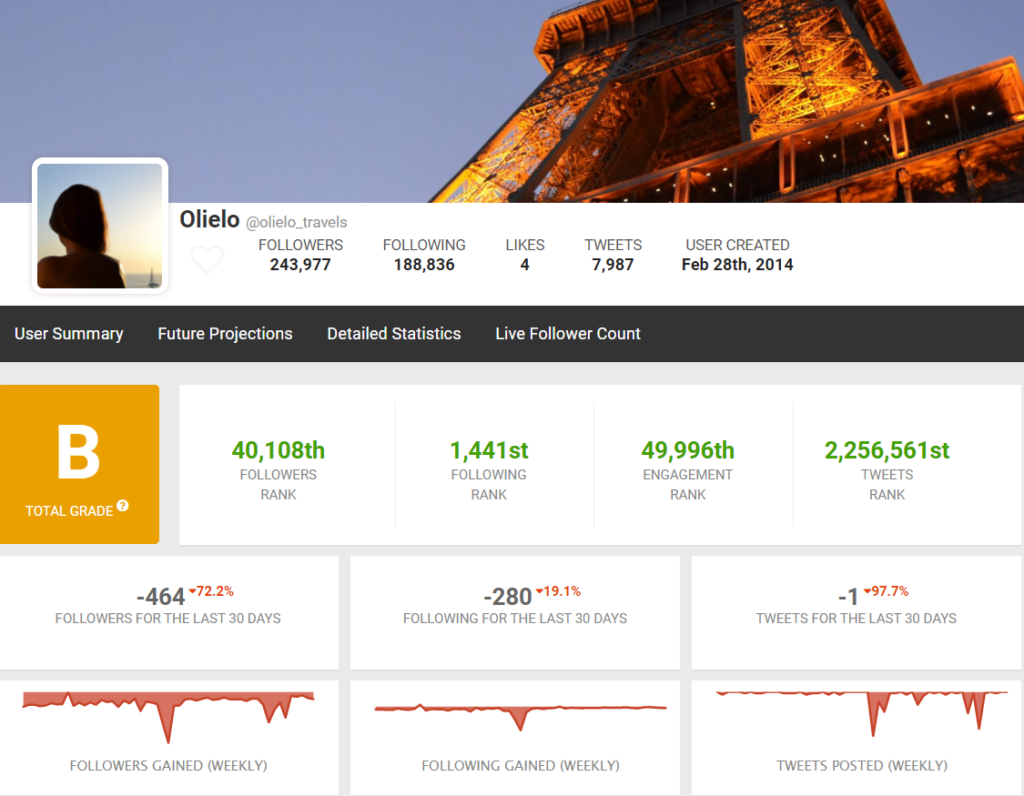
Posting Frequency
Check how often your competitors post content and what engagement they have, then compare it to your own posting frequency. For example, if other brands regularly post on the weekend and gain user interactions, this means that their target audience is online at this time. You may want to follow their lead. For example, Fanpage Karma will help you get this data from your competitors’ profiles.
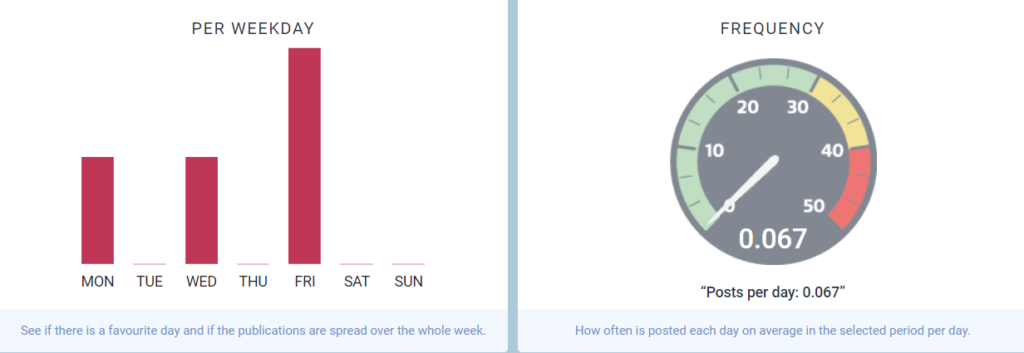
Engagement Rate
A highly engaged community is a clear indicator of a well-rounded social marketing strategy. Check which of your competitors’ posts receive the most likes, comments, and shares. For example, Vaizle offers free analysis tools to monitor engagement on Facebook, Instagram, Twitter, and YouTube. RivalIQ ranks posts by engagement on your competitor’s profile.
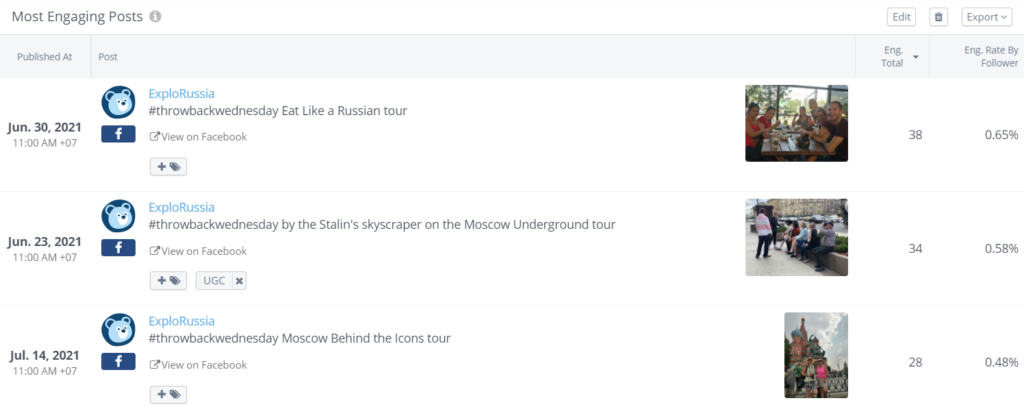
With Phlanx’s calculator, you can identify engagement for any URL.
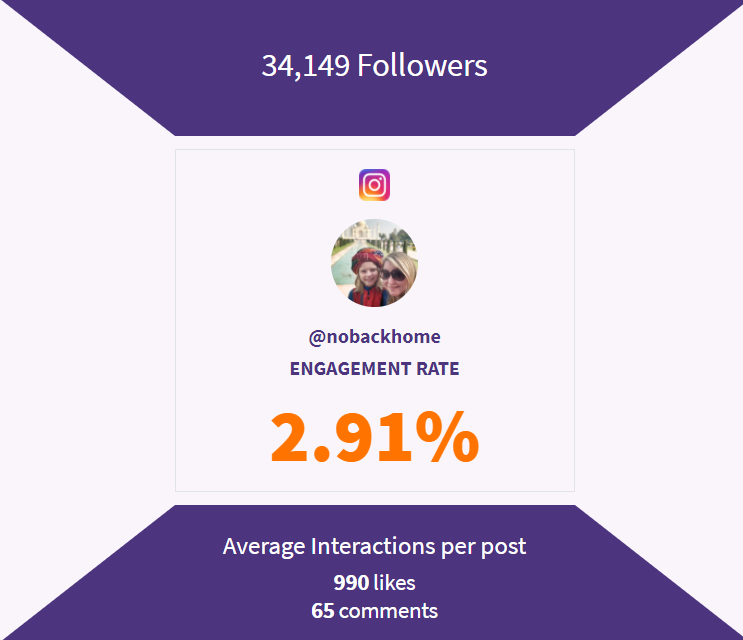
Also pay attention to the way brands interact with their followers. How do they respond to comments, especially negative ones? Take your analysis a step further and check your competitors’ page evolution. Go to their first publication and analyze how their approach has changed over time. Was it less effective at first than it is now? If so, what has changed?
Built-in analytics features on social networks can provide you with plenty of insights. For example, use “Pages to Watch” when performing Facebook competitor analysis. You can check the total page likes, the number of posts, and engagement for this week. To calculate the engagement rate, take the engagement volume for a post (or the average engagement of posts) and divide it by your competitor’s follower count.
Hashtags
Exploring hashtags can also give you insights into your competitors’ performance on social media. Tools like Hootsuite Streams monitor keywords and hashtags for different networks in one dashboard. Metricool gathers data on the most popular hashtags in your niche and presents detailed analytics on visual graphs, such as activity by hour or minute, language and device source distribution, participating countries, etc.
Mentions
Another smart approach is to analyze the share of your brand’s voice in comparison to your competitors. This may be hard to do manually, so consider using a special tool that will dig for brand mentions for you, such as Brandwatch, Mentionlytics, or SproutSocial.
You can also analyze audience sentiment to understand how users feel about a particular brand. For example, Brand24 allows you to understand whether the conversations around a business are mostly positive or negative.

Bios
Many brands take advantage of the bio section on social platforms to present their key advantages. Analyzing competitors’ profiles will give you insights into how they position themselves and which keywords they use to drive traffic. Tools like Followerwonk allow you to search Twitter bios for particular keywords, so you can type in your target keyword and find all brands that use it in their profile description.

Visuals
Visual content plays an important part in connecting with audiences, which is why most social media competitive analysis templates review how brands use imagery and videos. Rival IQ allows you to gather all your competitors’ photo and video posts in one grid to get an overview of their visual strategy. You can filter posts by type of content, metric, engagement, and more.
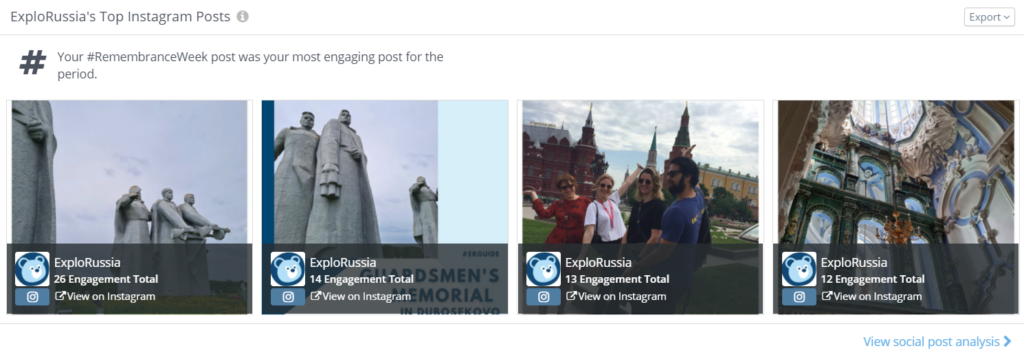
Paid Campaigns
Finally, make sure to analyze paid campaigns of your competitors. Advertisements are a clear indicator that a business is serious about reaching new audiences. While you can’t clearly identify how much they spend on ads, competitive media reports from tools like Sociality.io will show you analytics on the engagement that their boosted posts receive. This will allow you to compare the ratio between regular and promoted posts and evaluate how effective their promotion is.
3. Locate Gaps
The next step is to identify gaps in your strategy as well as the strategy of your competitors. Later, you can change these gaps into growth opportunities and dominate the market. Now that you know how to analyze social media, let’s highlight some methods to spot gaps in your social media strategy:
- Determine which social networks bring your competitors the highest engagement and whether you can build your social presence there.
- Identify your competitors’ most popular pages and see if you also cover the same topics (provided that you target the same audience). If not, maybe seizing new themes can help you reach more users.
- Determine which keywords your competitors target that you do not and whether you can add them to your content. Another question is whether your content matches the search queries that attract people to you. Explore related keywords that may bring you more traffic.
- The same goes for hashtags: identify those that bring traffic to your competitors’ pages and see if you can incorporate them into your strategy.
- Analyzing bios can give you insights into how other brands position themselves so you can create a more captivating profile description.
- Paid campaign analysis will show you which ads generate engagement for other brands so that you can build an effective campaign for yourself.
Finally, you can ask your target audience directly to share feedback and pick your strategy apart. For instance, ask them which topics they find the most engaging, what their pain points are, what may be missing in your content strategy, etc.
In the end, it’s all about benchmarking your performance against your competition. Based on what you find, adjust your strategy and use your competitors’ own tactics to get an edge over them.
How to Run Competitor Analysis on Social Media
With social media often being the number one source for consumer information, more and more brands are carefully studying the environment. In addition, social media competitor analysis plays a big part in creating a powerful marketing strategy. The key to success there is gathering data and identifying gaps in your competitors’ approach that you can fill in.




